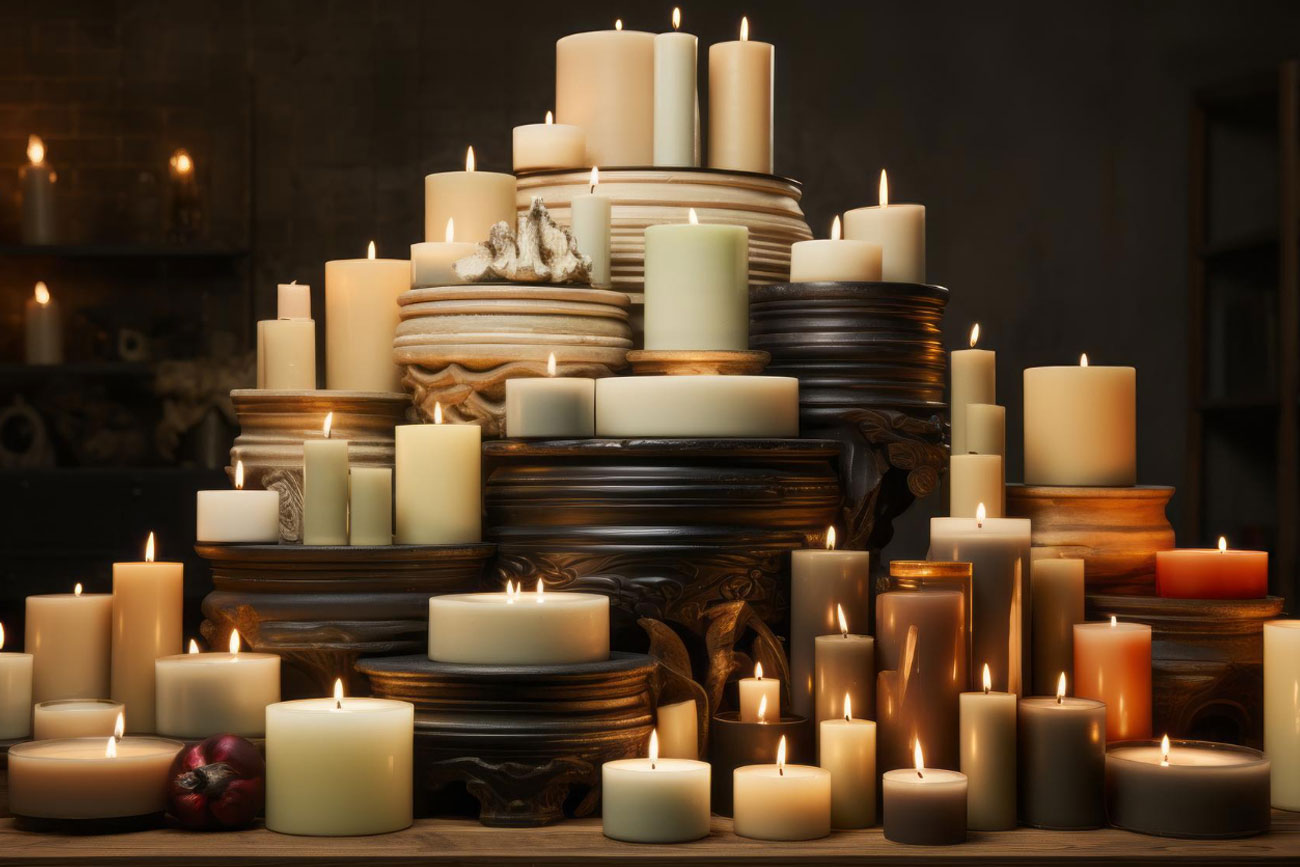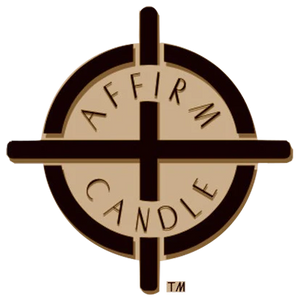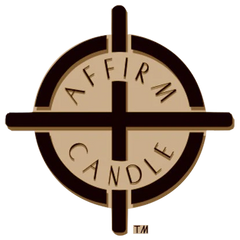How Do You Know If a Candle is Good Quality: Ultimate Guide

A good quality candle burns evenly and has a consistent, pleasant scent. It also produces minimal soot and smoke.
Choosing a high-quality candle can enhance your home ambiance and provide a better burning experience. Such candles often use high-quality ingredients like natural soy or beeswax for cleaner, longer burning. The wick plays a crucial role as well; it should be made of cotton or wood to ensure an even burn.
Quality candles are also characterized by their scent, which should be well-balanced and derived from high-grade essential oils or fragrance oils. Lastly, consider the packaging and overall craftsmanship, as these often reflect the care and quality invested in the candle. Investing in a good quality candle can make all the difference in achieving a cozy and inviting atmosphere.
Identifying High-quality Candles
Finding the best candle involves more than choosing a pleasing scent. A candle's quality can significantly affect its burn time, scent throw, and overall experience. This guide will help you identify high-quality candles by explaining critical indicators and different wax types.
Key Indicators Of Premium Candles
Several factors determine a candle's quality:
- Burn Time: A high-quality candle burns longer.
- Flame Size: The flame should be stable and not too large.
- Soot Production: Quality candles produce minimal soot.
- Dripping: A good candle should stay dry.
- Glass Safety: Candles in glass should not cause breakage.
- Scent Consistency: The fragrance should be consistent throughout the burn.
Wax Types And Quality
Wax type significantly impacts the candle's performance:
| Wax Type | Quality Indicators |
| Soy Wax | Burns cleanly and slowly, eco-friendly, excellent scent throw. |
| Beeswax | Natural, long burn time, emits a natural honey scent. |
| Paraffin Wax | Inexpensive, excellent scent throw, but produces more soot. |
| Coconut Wax | Burns cleanly, has an excellent scent throw, and is eco-friendly. |

The Role Of Wax In Candle Quality
The type of wax used in candles significantly affects their quality. Wax determines the burn time, scent throw, and overall performance. Understanding wax types helps you select high-quality candles.
Paraffin Vs. Soy Vs. Beeswax
- Paraffin wax is a popular choice due to its affordability and versatility. It burns quickly and offers a strong scent throw.
- Soy wax is a natural alternative made from soybean oil. It burns cleaner and longer than paraffin. Soy candles produce less soot and hold fragrance well.
- Beeswax is another natural option. It burns the longest and emits a subtle, natural honey scent. These candles purify the air by producing negative ions when they burn, which helps neutralize pollutants and allergens, improving air quality and potentially benefiting respiratory health.
Signs Of Pure And Blended Waxes
To identify pure and blended waxes, consider the following:
- Label Information: Check for specific wax types on the label.
- Appearance: Pure waxes often have a smooth and uniform look. Blended waxes may appear mottled or uneven.
- Scent Throw: Pure wax candles generally offer a more consistent scent.
- Burn Time: Pure wax candles typically burn longer than blended ones.
| Wax Type | Characteristics | Burn Time |
| Paraffin | Strong scent throw, affordable | Short |
| Soy | Clean burn, less soot | Longer |
| Beeswax | Natural honey scent, air purifying | Longest |
Wick Considerations
Wicks play a crucial role in determining a candle's quality. They influence the burn rate, soot production, and overall safety. Understanding wick sizing and materials can help identify high-quality candles.
Proper Wick Sizing
Proper wick sizing ensures an even burn and prevents issues like tunneling. Here are key points to consider:
- Diameter of the Candle: Larger candles require thicker wicks.
- Wax Type: Different waxes need different wick sizes. For example, soy wax requires larger wicks than paraffin.
- Burn Time: Longer burn times need wicks that can sustain a consistent flame.
Using a wick that's too small can cause weak flames and uneven burning. Conversely, a wick that's too large can produce excessive smoke and soot.
Materials Used In High-quality Wicks
The material of the wick affects the candle’s performance. High-quality candles often use specific types of wicks:
| Material | Benefits |
| Cotton | Burns cleanly, has minimal soot production, and is eco-friendly. |
| Wood | Creates a crackling sound, burns evenly, and adds a rustic charm. |
| Hemp | Durable, burns slowly, and is often used in natural candles. |
Avoid candles with wicks containing metal cores. These can release harmful substances when burned.
Scent And Fragrance Oils
The scent of a candle is not just a pleasant addition but a crucial element that defines its quality. A high-quality candle will boast a robust, pleasing fragrance that permeates the room. The fragrance oils used in candles, whether natural or synthetic, each have their unique advantages and disadvantages.
Natural Vs. Synthetic Fragrances
Natural fragrances are derived from plants, flowers, and other natural sources. They are often preferred because they are free from chemicals and can provide a more authentic scent. Here are some key points:
- Natural fragrances are extracted from essential oils.
- They tend to have therapeutic properties.
- They are usually more expensive.
Synthetic fragrances are made in a laboratory to replicate various scents. They provide a broad selection of smells and are often cheaper than natural alternatives. Here are some benefits:
- Wide variety of scents available.
- More consistent and long-lasting.
- Cost-effective compared to natural oils.
Evaluating Scent Throw
Scent throw describes the ability of a candle to spread its fragrance across an area. There are two types of scent throw:
| Type | Description |
| Cold Throw | The scent released when the candle is unlit. |
| Hot Throw | The scent released when the candle is burning. |
A high-quality candle will have a solid cold throw and an even stronger hot throw. To evaluate a candle's scent throw:
- Smell the candle when it's unlit to gauge the cold throw.
- Light the candle and let it burn for a few hours.
- Check how well the fragrance fills the room.
If the scent is weak or barely noticeable, the candle may not be of good quality. A top-quality candle will have a balanced and robust scent throw, enhancing your space with its delightful aroma.

Burn Time And Performance
As a candle enthusiast or consumer, your understanding of the burn time and performance of a candle is crucial in determining its quality. A high-quality candle burns longer, cleanly, and consistently. This section is designed to help you explore the average burn times and factors affecting them.
Average Burn Times
The average burn time varies by candle type. Generally, a well-made candle burns 7-9 hours per ounce of wax. Here are some typical burn times:
| Candle Type | Burn Time (Hours) |
| Tea Light | 4-6 |
| Votive | 10-15 |
| Pillar | 50-75 |
| Jar | 30-50 |
Factors Affecting Burn Time
Several factors influence a candle's burn time. These include:
- Wax Type: Different waxes burn at different rates. Soy wax burns slower than paraffin wax.
- Wick Size and Material: The wick's size and material affect how quickly the candle burns.
- Fragrance Load: Higher fragrance loads can decrease burn time.
- Burn Environment: Drafts and room temperature can impact burn performance.
To maximize burn time, keep the wick trimmed and burn the candle in a draft-free area.
Visual Inspection Of Candles
Inspecting a candle visually can reveal a lot about its quality. By carefully examining the wax, wick, and overall appearance, you can make an informed decision. Let's dive into some tips for a thorough visual inspection.
Inspecting The Wax Before Purchase
Before buying a candle, take a close look at the wax. Quality wax should appear smooth and uniform. The consistent color indicates that the wax was appropriately mixed. Any uneven colors or streaks suggest poor quality.
Here are some key points to inspect:
- Smooth texture: The wax surface should be free of bumps and holes.
- Uniform color: Consistent color throughout the candle indicates good mixing.
- No oily residue: A good candle should not feel greasy to the touch.
High-quality wax is crucial for an even and clean burn.
Spotting Flaws And Imperfections
Look for any visible flaws or imperfections in the candle. Cracks, bubbles, and uneven surfaces can be signs of poor craftsmanship. A well-made candle should have a polished and smooth finish.
Consider these factors:
- Cracks: Small cracks can affect the burn quality.
- Bubbles: Air bubbles might lead to uneven burning.
- Uneven surfaces: A smooth surface is a mark of quality.
By taking the time to check for these imperfections, you are in control of ensuring you pick a reliable candle. By following these tips, you can visually inspect candles and choose the best quality available.
Eco-friendly And Ethical Considerations
When choosing a candle, considering eco-friendly and ethical factors is crucial. These aspects ensure you select a product that is not only good for you but also kind to the planet. Let's dive deeper into two essential elements: sustainable ingredients and ethical sourcing practices.
Sustainable Ingredients
A good quality candle should be made from sustainable ingredients. Here are some key points to consider:
- Natural Waxes: Look for candles made from soy wax, beeswax, or coconut wax. These are renewable resources and have a lower environmental impact compared to paraffin wax.
- Avoid Harmful Additives: Ensure the candle does not contain harmful additives like phthalates or synthetic dyes. These can release toxic substances when burned.
- Essential Oils: Prefer candles scented with pure essential oils rather than synthetic fragrances. Essential oils are natural and provide a more authentic aroma.
Ethical Sourcing Practices
Ethical sourcing practices ensure that the ingredients in your candle are obtained responsibly. Here are some points to consider:
- Fair Trade: Choose candles from brands that support fair trade. This ensures fair wages and working conditions for farmers and workers.
- Transparency: Look for brands that clearly disclose where their ingredients come from. Transparency is key to trust.
- Cruelty-Free: Ensure the candle is cruelty-free. No animals should be harmed in the production process.
By paying attention to these eco-friendly and ethical considerations, you can ensure that your candle is of high quality and aligns with your values.
Packaging And Presentation
When evaluating a candle's quality, its packaging and presentation play crucial roles. A well-packaged candle not only looks appealing but also provides essential information about its quality and safety. Below, we discuss the significance of aesthetic packaging and the vital details on labels that you should look for.
Importance Of Aesthetic Packaging
Aesthetic packaging is more than just eye-catching designs. It often indicates the brand's attention to detail and commitment to quality. Here are a few key points to consider:
- Material: High-quality candles usually come in sturdy, well-crafted containers.
- Design: Elegant and sophisticated designs often reflect premium quality.
- Branding: Clear and professional branding shows the manufacturer's pride in their product.
Safety And Information On Labels
The label on a candle provides vital information about the product's safety and ingredients. Here's what to look for:
| Label Information | Importance |
| Burn Time | Indicates how long the candle will last. |
| Ingredients | Shows if the candle uses quality wax and fragrance. |
| Safety Warnings | Includes instructions to prevent accidents. |
High-quality candles often have detailed labels that include safety tips and ingredient lists. Look for labels that mention the type of wax used, such as soy or beeswax, and any fragrances or essential oils included.
Leveraging Customer Reviews And Recommendations
Finding a high-quality candle can be tricky. One reliable method is to leverage customer reviews and recommendations. These insights help you understand other users' experiences. This section will guide you on how to use customer feedback and trusted recommendations to make informed decisions.
Understanding Customer Feedback
Customer feedback gives you real-life experiences. Reading reviews on platforms like Amazon or Etsy can reveal the quality of the candle. Look for comments on the scent throw, burn time, and overall satisfaction.
Reviews can be categorized into several key areas:
- Scent: Does the candle have a robust and pleasant aroma?
- Burn Time: How long does the candle last?
- Clean Burn: Does the candle burn evenly without soot?
- Price: Is the candle worth the price?
Always check for a balance of positive and negative feedback. This helps you make a more informed decision.
Finding Trusted Recommendations
Trusted recommendations often come from friends, family, or reputable sources online. Because they come from people you trust, these recommendations can be more reliable than random reviews. Look for candles recommended by well-known bloggers, influencers, or candle enthusiasts.
An excellent way to find trusted sources is to:
- Search for top-rated candle blogs.
- Follow social media accounts dedicated to candles.
- Join candle enthusiast forums or groups.
These sources often provide detailed reviews and comparisons, helping you find the best quality candles.
Frequently Asked Questions
Q: How Can You Tell Good Quality Candles?
Good quality candles have a long burn time, minimal soot, even melting, and solid and balanced fragrances.
Q: What Determines The Quality Of A Candle?
The quality of a candle is determined by the type of wax, wick quality, fragrance balance, and burn time.
Q: Is There A Difference Between Cheap And Expensive Candles?
Yes, cheap candles often use lower-quality wax, synthetic fragrances, and shorter burn times. Expensive candles use premium ingredients and natural fragrances and last longer.
Q: What Are High-Quality Candles Made Of?
High-quality candles are made of natural waxes like soy, beeswax, or coconut. They use pure essential oils for fragrance and cotton or wood wicks.
Q: What Makes A Candle High Quality?
A high-quality candle uses premium wax, natural fragrances, and a well-designed wick for even burning.
Q: How Can You Identify Good Candle Wax?
Good candle wax is smooth, consistent, and free from impurities. It should also burn cleanly without producing excess soot.
Q: Do High-quality Candles Produce Less Soot?
Yes, high-quality candles produce minimal soot. This is due to better ingredients and proper wick maintenance.
Conclusion
To determine if a candle is of good quality, check its ingredients and burn performance. High-quality candles use natural waxes and essential oils. They burn evenly, produce minimal soot, and have a consistent scent throw. If you consider these factors, it will help you confidently choose candles that enhance your ambiance and provide a pleasant experience.


